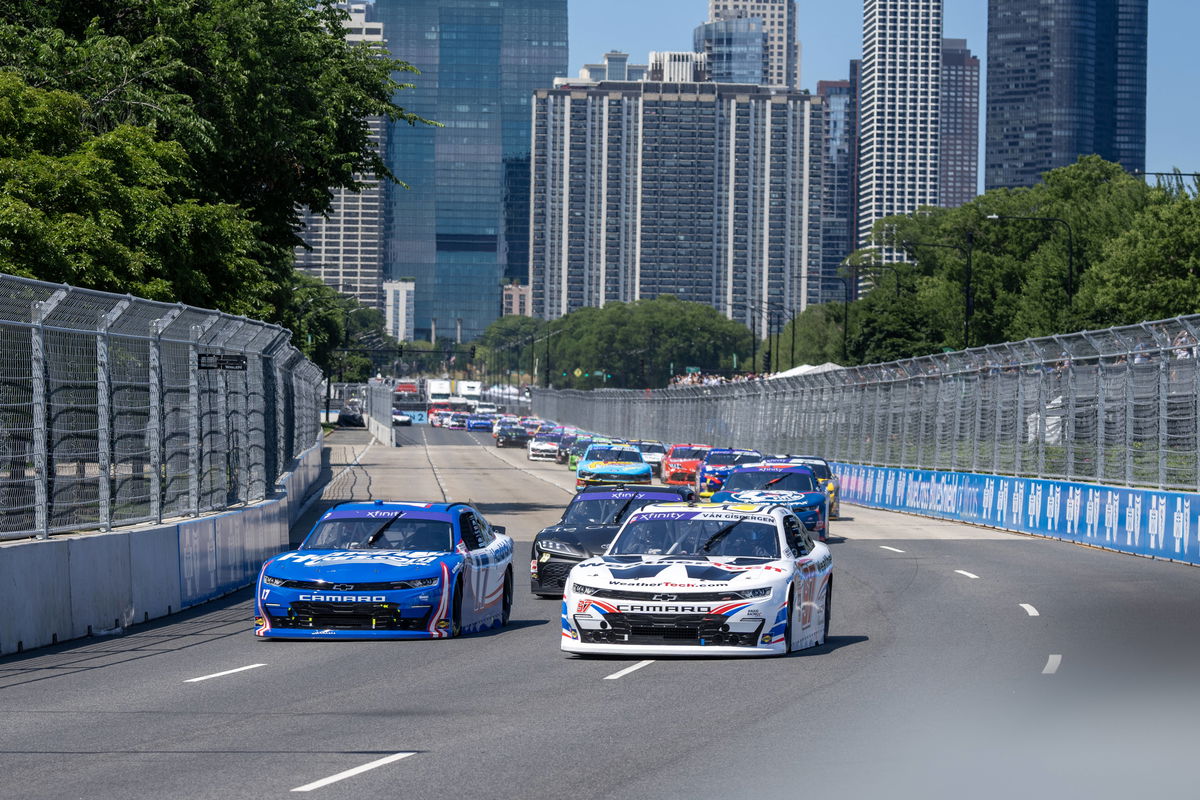
Imago
NASCAR, Motorsport, USA Xfinity Series : July 06 The Loop 110 NASCAR Xfinity Series driver, Shane van Gisbergen races for position for the The Loop 110 in Chicago, IL, USA. LicenseRM 21941955 Copyright: xZoonar.com/LoganxTxArcexActionxSportsxPhotographyxInc.x 21941955

Imago
NASCAR, Motorsport, USA Xfinity Series : July 06 The Loop 110 NASCAR Xfinity Series driver, Shane van Gisbergen races for position for the The Loop 110 in Chicago, IL, USA. LicenseRM 21941955 Copyright: xZoonar.com/LoganxTxArcexActionxSportsxPhotographyxInc.x 21941955
Randy LaJoie was once a force in NASCAR. He won back-to-back Busch Series titles in 1996 and 1997. LaJoie built a career on grit and racecraft. One of his biggest wins came at Charlotte in 1997, where he led 97 laps in the All Pro Bumper to Bumper 300. After retiring, the NASCAR driver became known for his safety advocacy through his company, The Joie of Seating. But while his own career had moments of glory, his son Corey’s journey has been harder. Despite strong potential, Corey has struggled to break through. In a recent interview, LaJoie opened up about the reasons why and exposed some harsh truths that NASCAR drivers face today.
Watch What’s Trending Now!
Corey LaJoie made his Cup debut in 2014 with Randy Humphrey Racing. He ran just six races that year. Over time, he bounced between small teams before getting a full-time Cup ride with Go Fas Racing in 2019. His best finishes often came at superspeedways. The NASCAR driver had a 6th-place run at Daytona in 2019 and a 4th-place run at Atlanta in 2023 with Spire Motorsports. But consistent results were rare. In 2024, he was moved to a part-time schedule with Rick Ware Racing. Next year, things look worse. Cody Ware is expected to return to RWR full-time, pushing Corey further out. With this backdrop, Randy LaJoie recently revealed the financial barriers that have kept his son from rising higher.
ADVERTISEMENT
“You get what you pay for”: LaJoie on NASCAR drivers’ struggles
Speaking with veteran broadcaster Rick Benjamin, Randy LaJoie explained why drivers like Corey cannot climb in today’s Cup Series, let alone reach the playoffs, without deep pockets or strong backing. Talent alone is no longer enough. “If you don’t have a granddad or huge money in your back pocket, you get what you pay for,” LaJoie said. The legendary NASCAR driver highlighted how family wealth and sponsorships often outweigh ability. He noted that Corey’s partners are focused on business-to-business exposure. That means racing on Sundays, even if it is with weaker equipment.
Top-tier teams, LaJoie said, spend around “$400,000” per race. Mid-pack teams like Spire or RWR operate on “$75,000 to $100,000.” That money gap limits what kind of engineering, data, and technology drivers like Corey can access. LaJoie broke down how big the gap is, especially in technical support. “Simulation is only as good as what you plug into it,” he explained. Without full factory backing from Chevrolet, Ford, or Toyota, smaller teams cannot match the accuracy or development pace of the big ones.
LaJoie further pointed out an example of how one single part can also have a huge impact on the car’s performance. “And nowadays with these cars and engineering with these cars, I mean, you change a 100,000 shim, it means you’re in the top five qualifying or you’re 25th,” he said.
ADVERTISEMENT
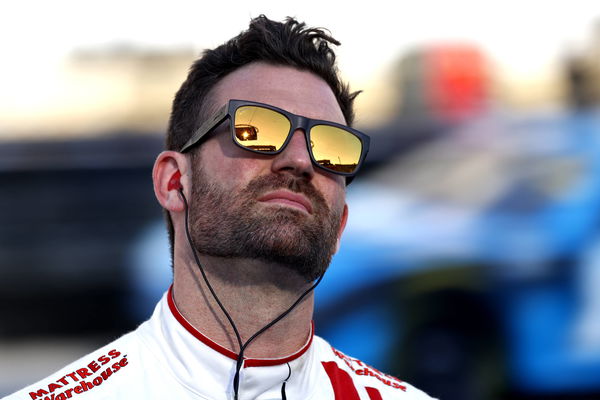
Imago
BRISTOL, TN – SEPTEMBER 20: Corey LaJoie 7 Spire Motorsports Mattress Warehouse Chevrolet watches the Jumbo Tron during qualifying for the NASCAR, Motorsport, USA Cup Series Bass Pro Shops Night Race on September 20, 2024 at Bristol Motor Speedway in Bristol, TN. Photo by Jeff Robinson/Icon Sportswire AUTO: SEP 20 NASCAR Cup Series Bass Pro Shops Night Race EDITORIAL USE ONLY Icon2409202755
Randy LaJoie raced in a time when drivers could earn better rides by winning races and proving themselves on track. Corey, by contrast, has had to secure sponsors, navigate business deals, and drive underfunded cars. Now, with no clear full-time seat in sight for 2025, Corey is turning to broadcasting. He will be part of Amazon Prime’s new NASCAR coverage team, which launches next season. The move suggests he is keeping his options open as driving opportunities shrink.
ADVERTISEMENT
Top Stories
Horrific Aerial Footage of Greg Biffle’s Fatal Crash Emerges Leaving NASCAR Community in Tears
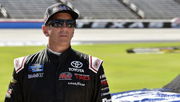
Another Almost Fatal Disaster Surfaces From Statesville Airport Amidst Ongoing Greg Biffle’s Crash Investigation
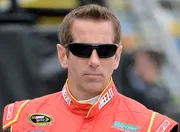
Greg Biffle’s Haunting Aviation Admission Resurfaces Hours After Tragic NC Plane Crash

Footage Surfaces of Florida Police Arresting NASCAR Veteran Over Disturbing Public Misbehavior

Martin Truex Jr’s Dying Home Track Gets New Lease on Life With Bold Promise
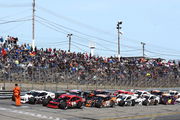
LaJoie goes from NASCAR driver to an off-track analyst
Corey LaJoie is still fighting for relevance in NASCAR’s top tier. At 33, he does not have a full-time Cup Series ride for 2025. Instead, he will run a partial schedule with Rick Ware Racing and debut as an analyst for Amazon Prime Video’s NASCAR coverage. The move reflects the shifting ground beneath LaJoie, a driver with over a decade of persistence but few top-tier results to show.
The NASCAR driver will serve as a studio analyst during Amazon’s five-race stretch, beginning with the Coca-Cola 600 at Charlotte. He joins a team that includes Dale Earnhardt Jr., Kevin Harvick, and Mike Joy. Reflecting on the shift, LaJoie said, “When those guys were pursuing me… I saw that there are other things I can do outside of being a full-time Cup driver.” He made similar remarks in previous interviews, noting how analyzing races helps him gain perspective and stay connected while off-track.
ADVERTISEMENT
For 2025, Cody Ware will run RWR’s full-time chartered entry, pushing LaJoie to part-time. That leaves LaJoie competing not just for positions but for presence. His career-best finish is 4th, earned at Atlanta in 2023 while with Spire Motorsports. In mid-2024, he was swapped out of Spire’s No. 7 for Justin Haley and moved to Rick Ware Racing’s No. 15 car.
LaJoie’s dual role is a sign of changing times. With rides harder to secure, visibility off-track matters more than ever. He is still racing. Still building his brand. Still trying to stay in the sport that defined his life. But in 2025, the path forward may depend less on results and more on reinvention.
ADVERTISEMENT
ADVERTISEMENT
ADVERTISEMENT
ADVERTISEMENT

